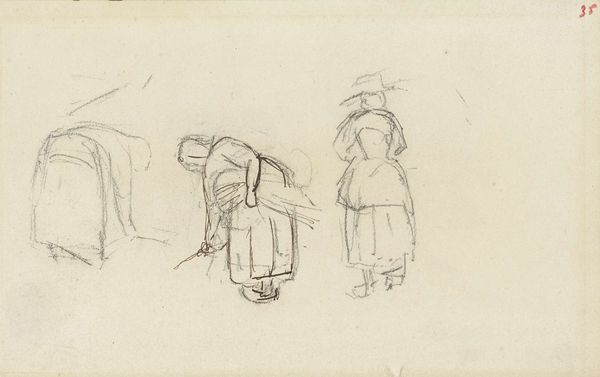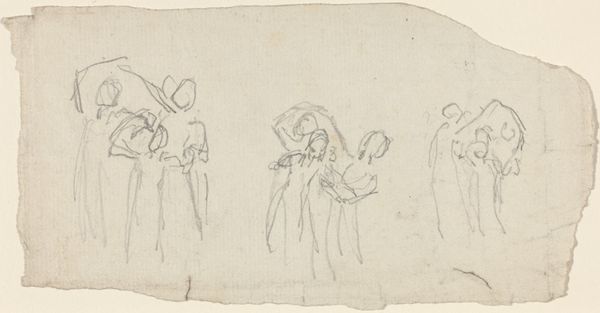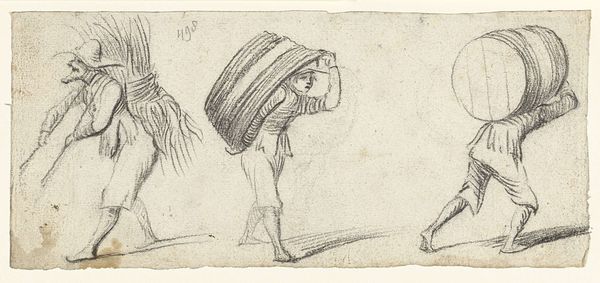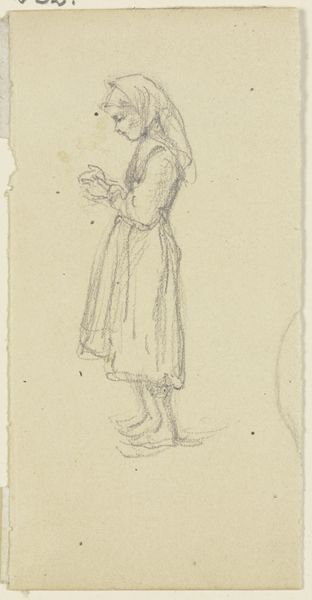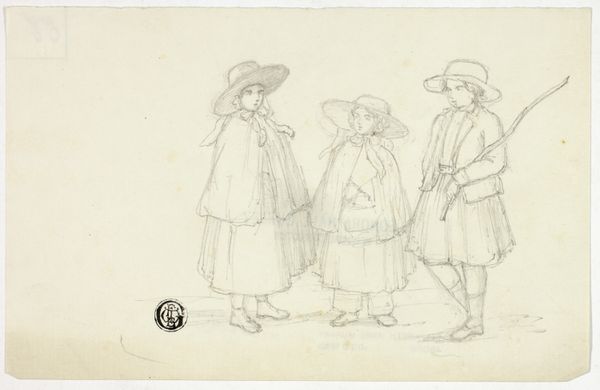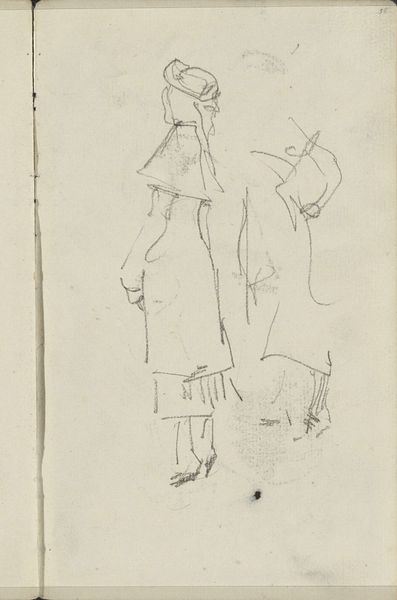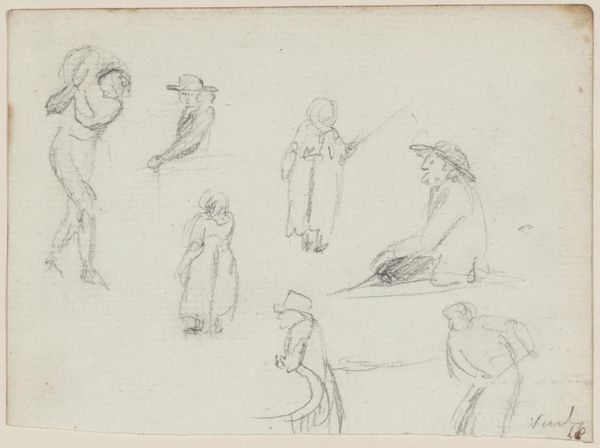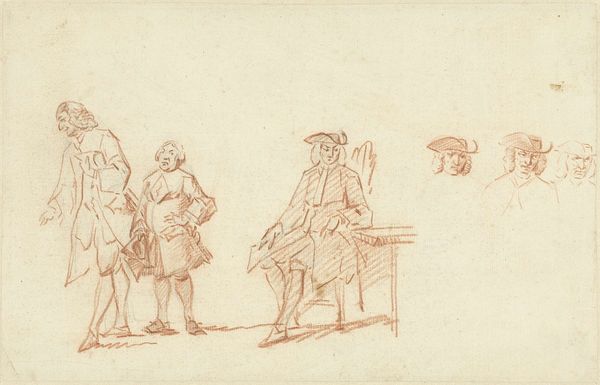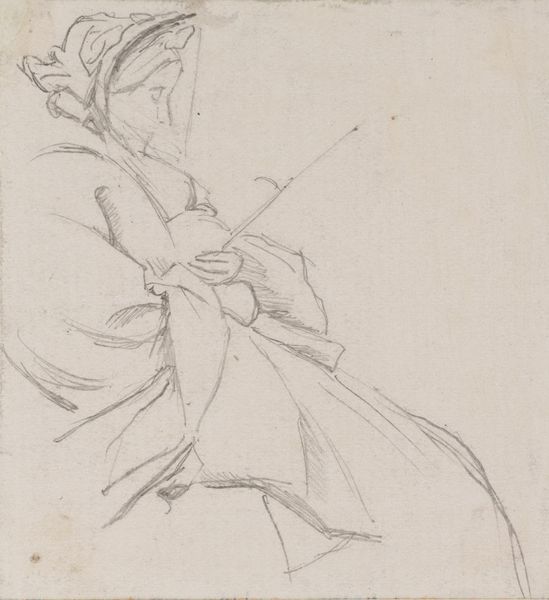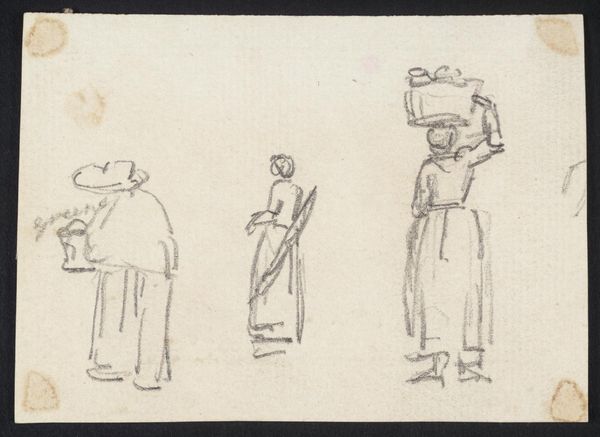
drawing, pencil
#
portrait
#
drawing
#
dutch-golden-age
#
figuration
#
pencil
#
sketchbook drawing
#
genre-painting
Dimensions: height 112 mm, width 264 mm
Copyright: Rijks Museum: Open Domain
Curator: Editor: This drawing by Johannes Bosboom, "Three Studies of Women," probably made between 1827 and 1891, is really striking! I notice how quick and free the lines are – they’re so economical but still convey so much about the figures. What stands out to you most when you look at this? Curator: What strikes me is the tension between the apparent informality and the intense social coding contained within the images. These are not simply “studies of women.” Think about what Bosboom, a man, chooses to depict, and how. What can the depiction of a woman with a bonnet or a hat in this era communicate, considering class and social standing? How might these visual signifiers either reinforce or challenge dominant societal norms? Editor: That's an interesting point about social coding. So, is the "bonnet versus hat" a symbol for class differences here, like the covered head versus the exposed hair suggests two different identities? Curator: Exactly. It’s crucial to analyze not just what is depicted but *how* it’s depicted and the historical moment in which this depiction occurs. These weren't neutral observations, these images of women played roles in constructing ideas around gender, class, and even national identity during a time of significant social change. Can you think about how fashion or costume could function politically? Editor: It hadn’t occurred to me to think so deeply about these details… I guess it does feel like these sketches give you a glimpse into the artist's world but also into the lives of these women, and those times, that opens another angle of appreciation! Thanks for shedding light on the possible dialogue between visual imagery, identity and social constructs. Curator: It’s precisely this dialogue that makes engaging with art so rewarding. Every line, every composition choice speaks volumes when considered in its historical and social context.
Comments
No comments
Be the first to comment and join the conversation on the ultimate creative platform.
